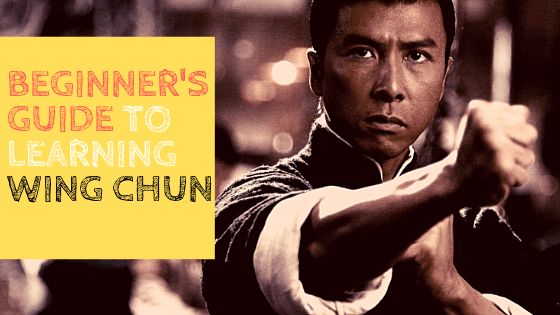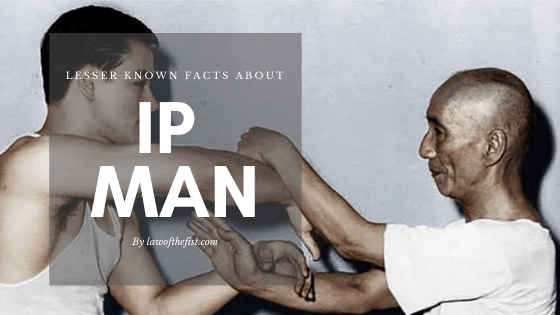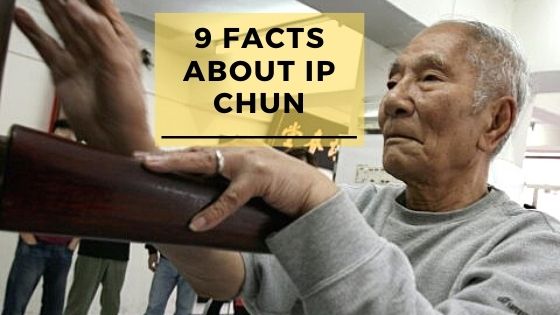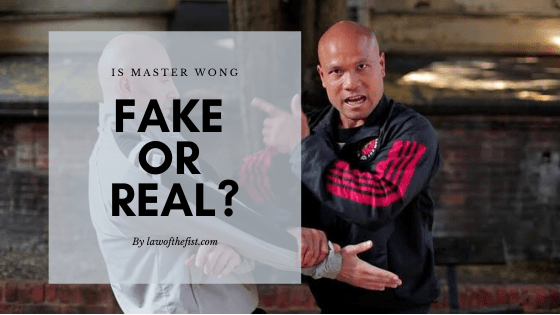Wing Chun is a unique type of martial arts specializing in close-combat involving Kung Fu fighting styles and so much dwells in taking out an opponent as quick as possible.
Wing Chun is one of the traditional defense martial arts still being utilized today for its useful practicality.
The technique focuses on both fundamental and timing values rather than ones’ strength and speed. It, therefore, means that everyone can train and still be good at it despite age or gender.
Comparatively to other martial arts, learning Wing Chun takes at least lesser time –just a few years. However, if you wish to be a master, then it is obvious you will have to dwell on it for a bit more years to understand it at length.
쉬운 목차
Centerline Principle
One of the vital principles you will learn when you begin your training on Wing Chun is the centerline principle.
It says that you should always angle your body away from your opponent and yet control theirs when fighting.
A basic understanding of how to manipulate your footwork will ultimately assist you in achieving this.
A center-line is an imaginary vertical line passing through you downwards.
Across the centerline there are critical organs and therefore it should remain protected against the opponent.
Note that whenever you are throwing a punch from your centerline, you utilize your entire body, the hips, and everything and that offensively generates a lot of power.
Also, when advancing to attack your opponent in a straight path, your centerline often is away from them but still faces their center.
The centerline comes with three main guidelines which include the following;
- Whoever is controlling the centerline controls the fight as well
- At all cost maintain and protect your centerline while exploiting and controlling that of your opponent.
- To control the centerline, you need to occupy it.
Wing Chun Fighting Stance
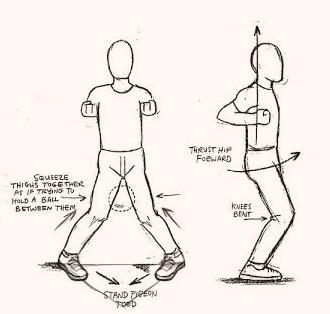
As much as you will not apply some of these fight postures in your real fights, they are of primary use to learn as they will be useful in your training. They will help you learn other techniques better.
Before beginning any Win Chun exercise, the neutral stance is essential as a standard posture.
To achieve it, you need to first of all half squat and with your feet on the very same spot, make a turn such that one of the legs stays in front of the other.
Secondly, position your hands at chest height and forward to a similar position as the forwarded leg.
Approximately 70% of your body weight will receive support by your rear leg, and therefore in that position, you can easily lift your leading foot in the air if needed.
This action requires your hands to be slightly bent.
Wing Chun Turning Stance
Turning stance is essential to practice when it comes to learning more of Wing Chu.
It entails learning how to control stability while switching sides and still possess the power. Whenever you begin fighting, you must have a specific stance.
Whenever you are in the left lead stance, you can always rotate with your feet towards your right-hand direction. The rotation will be 180°.
While doing this, your overall body weight will shift from the original left to the right side of you with your hands altering their positions.
Meaning your fight stance will end with you in the right lead.
Wing Chun Footwork Drills
The effectiveness of one’s Wing Chun techniques goes hand in hand with correct and proper footwork. Without it, you lose your balance and risk defeat from your opponent.
Footwork mainly helps control distance. Once you understand how to gain or lose distance from your opponent, then you can know of a better way to stay in defense.
In such a way, you can hit without getting hit back. To actualize this, you must ensure that you move forward whenever your opponent moves back and vice-versa.
Avoid rushing towards your opponent. Keep the distance always.
Wing Chun Step Forward
Stepping forward here refers to the distance with which you intend to cover. A short one means, you remain more stable; otherwise, the stability reduces.
The preferable range half steps. It is considered essential for practice.
To do this, with your lead leg, step forward approximately half step then channel more weight on it while sliding up your rear leg.
In backward stepping, you can follow the exact opposite procedure of step forwarding. Begin by moving our rear foot.
Wing Chun Punch Technique
Throwing a correct landing punch in a Wing Chun fight always needs great keenness to ensure it is a proper one.
Thus, there are lots of concepts tied to it. Some of these include; correct striking technique, body alignment, changing hands, weight distribution, balance, etc.
Whenever you are striking, ensure your limb does not straighten fully –, and this applies to both kicks and punches. The strategy helps you take care of ‘in case you miss.’
To do this, begin from your half-squat position having your hands raised and arms relaxed.
With your leading hand, punch out while tilting your body and turning slightly to enable the direction of your body weight in the direction of your rear leg.
When doing this, you can notice the position of your center-line. Your body will have angled out but still maintaining a mean punch.
The shifting of your weight will as well generate for you more power and will place you in a premium position to attack your opponent’s line.
Rightly after throwing a punch, it is recommendable that you relax your fist and make it stiff as you land, otherwise, you will be losing more power and speed.
At this relaxation instance, you should begin using the other side of you. Strike with the other hand and leg and remember not to overstretch your arms or to lock your elbow.
Remember, regular practice is critical if you want to reach mastery level.
Wing Chun Blocks
As a beginner, you will learn some of the useful Wing Chun basic blocks which include the following;
Wing Chun Tan Sau
The technique focuses on the Tan Sau application. Whereby Tau Sau is referring to dispersing hand. Primarily, hands act as the main blocks; however, this tactic emphasizes the body as a blocker as well.
So instead of your hands, your body too can be essential in blocking.
Tau Sau helps introduce the counterattack, grabbing, as well as telegraphing concept.
The general fight mechanism of Wing Chun is deflecting attacks and not confronting them with equal or more force.
Out of it, the weaker fighter can gain leverage over the opponents who may be much stronger.
The technique well functions towards mid-level attacks coming straight to us.
How to perform Tau Sau
- At your half squat position lifting your hands.
- Shift your palm upwards and outwards as well from your center ensuring your elbow ends up at about fist-and-a-half length away from your body.
- Turn your whole body to the side.
- Your hand and body turn together, and let your waist operate.
- Put the other hand of yours inside, readiness for defense
- Relax your lead grip to the standard fighting stance spot then switch your lead hand.
- You can then relax the hand in action as you employ the other.
Wing Chun Pak Sau
Pak Sau also referred to as slapping hand is another pivotal Wing Chun movement. The method focuses on grabbing, body positioning, as well as sideways turning.
In practice, whenever your opponent’s punch is coming in, shift your body to the side and with your palm, right below your little figure, push his/her elbow.
In such a way you would have blocked the blow.
It is at this juncture that if you mean to hurt your opponent, you can throw a punch at them with your hand coming from the center of your body.
Note that the shifting of the sides should be done more often to confuse your opponent. Remember they know your moves, they can use it to take you out.
Wing Chun Bong Sau
The wing arm technique as sometimes referred to is one of the best and most effective methods utilized in Wing Chun fight. It mainly helps in deflecting an opponent’s punch.
To perform Bong Sau start at in the half squat position with your hands up.
- In one move, turn your hand down and your elbow up.
- Meanwhile, turn your waist and tilt your body, so your feet are in a fighting stance position.
- Let your waist perform the work – avoid the arm.
- Note to keep your arm in line and let your other hand be your guard hand – in case your opponent makes a through pass strikes.
- Make a slight backward turn to bring your hand back at your center.
- In relaxation mode, switch hand’s positions, for your other hand to become your lead.
- Alter your weight to reflect on the other side of you then re-perform the Bong Sau again
Having gone through the above discussion on the basic of Wing Chun, you now have an idea of what you need to learn as a new student.
With the right training opportunity, your training may only be a few years. Remember determination is a crucial factor towards quick and active learning.

